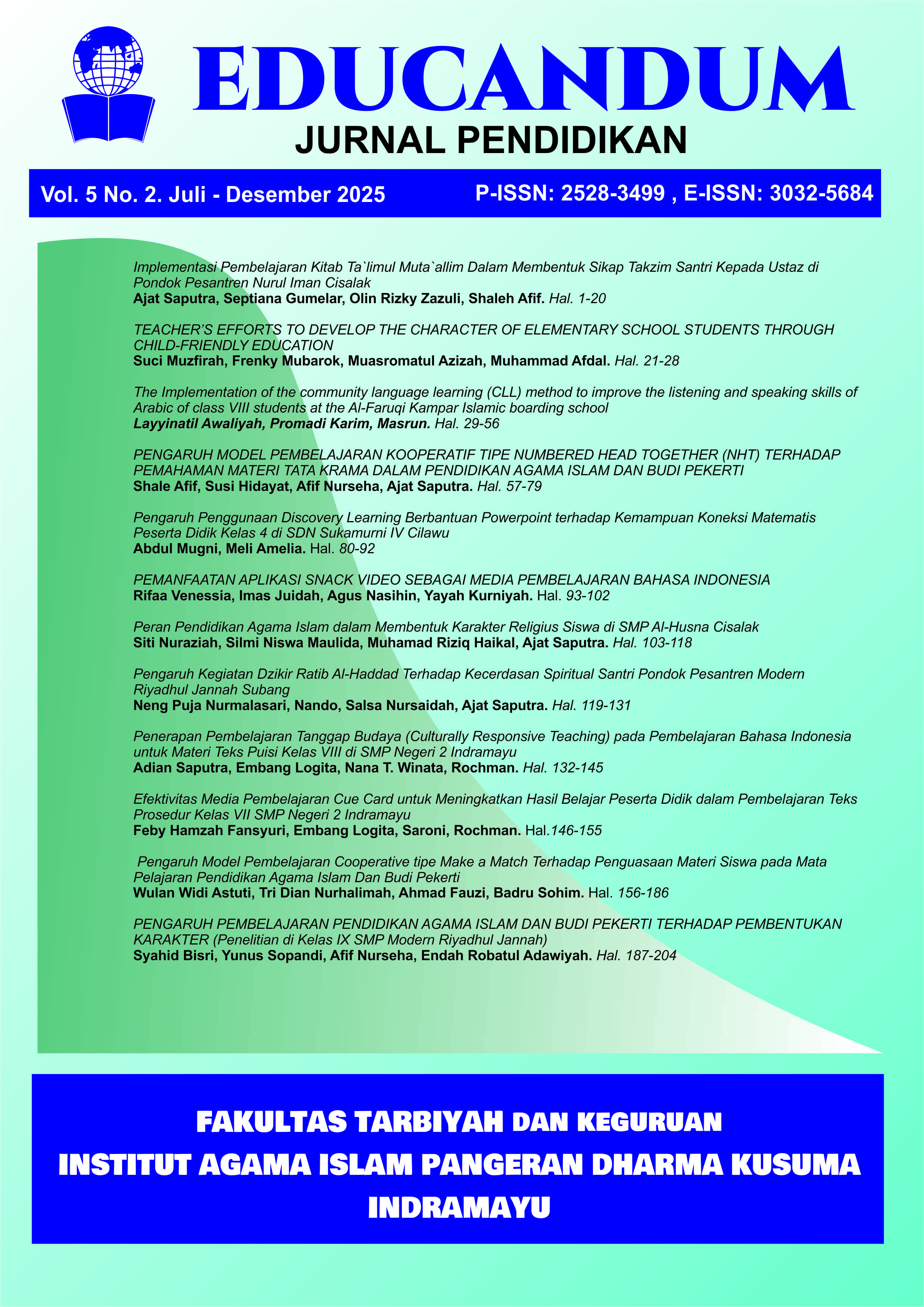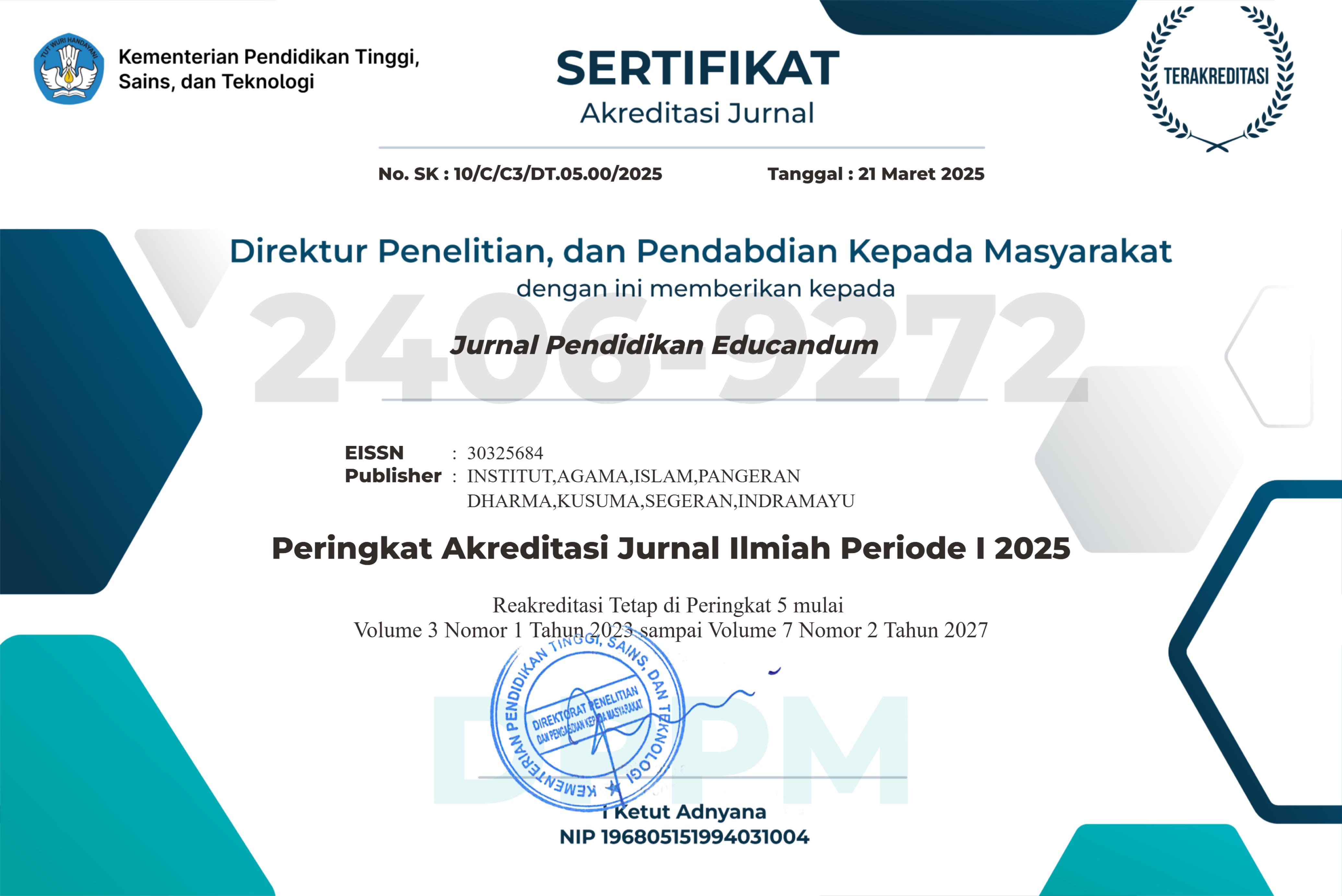Implementasi Pembelajaran Bahasa Arab Berbasis Kitab Kuning di Madrasah Aliyah Negeri 1 Kota Pekanbaru
DOI:
https://doi.org/10.55656/jpe.v5i2.468Keywords:
Arabic Language Learning, Kitab Kuning, Madrasah Aliyah.Abstract
This study aims to describe the implementation of Arabic language learning based on Kitab Kuning at MAN 1 Pekanbaru City and identify its implementation's supporting and inhibiting factors. This research employed a qualitative approach using observation, in-depth interviews, and documentation. The data analysis technique involved data reduction, data presentation, and conclusion drawing. The results show that the kitab kuning learning is an innovation within the existing curriculum structure and has been designed through a systematic managerial process based on the POACE approach. In the planning stage, the process involved the preparation of teaching materials by teachers, the selection of learning content and texts (Fathul Qorib and Nashoihul Ibad), and the assignment of competent teachers capable of teaching kitab kuning. In the organizing stage, the involvement of all academic community members was crucial, including the scheduling and division of responsibilities, as well as preparing learning facilities to support the process. The implementation of learning followed general teaching procedures from apperception to closing, with the use of methods such as sorogan, qira’ah, istiqraiyyah, and individual guidance for students who faced difficulties. Supervision was carried out by the head of the madrasah and the curriculum coordinator through direct observation, regular teacher reports, and program evaluation. Meanwhile, the evaluation process included daily assessments, semester exams, and practical tests in reading Kitab Kuning. Supporting factors included the availability of the Middle Eastern specialization class program, strong institutional support, adequate learning facilities, a conducive environment (such as dormitories), and collaboration with external institutions. On the other hand, inhibiting factors involved differences in students' Arabic language backgrounds, a lack of qualified substitute teachers when the main teacher was unavailable, and the burden of other academic subjects.
Downloads
Published
How to Cite
Issue
Section
License
Copyright (c) 2025 Fadhli, Hakmi Wahyudi, Agustiar, Rafiqi AlMunawwar

This work is licensed under a Creative Commons Attribution-ShareAlike 4.0 International License.










